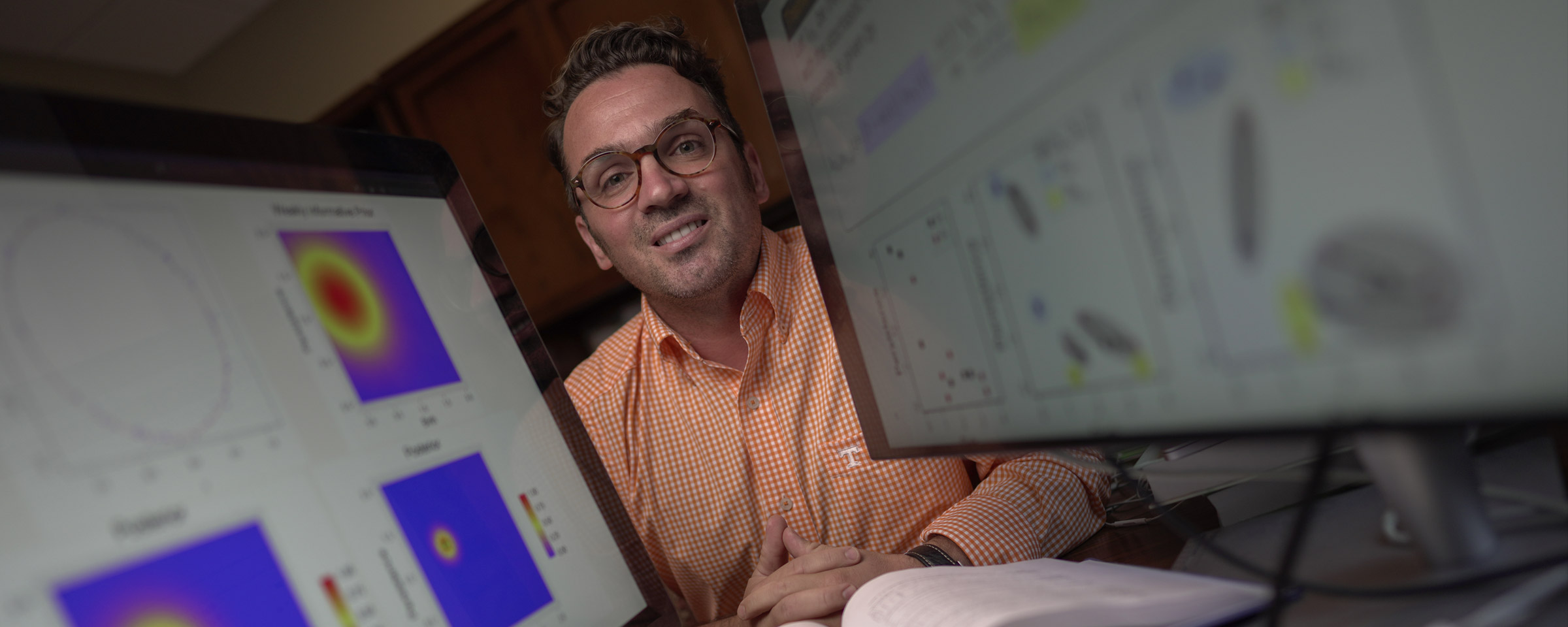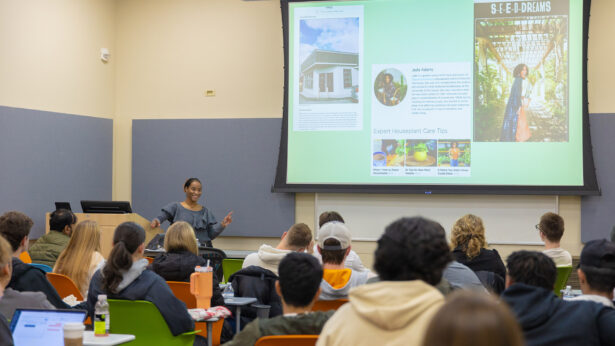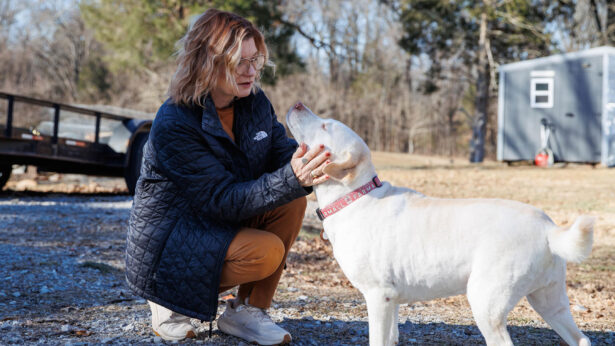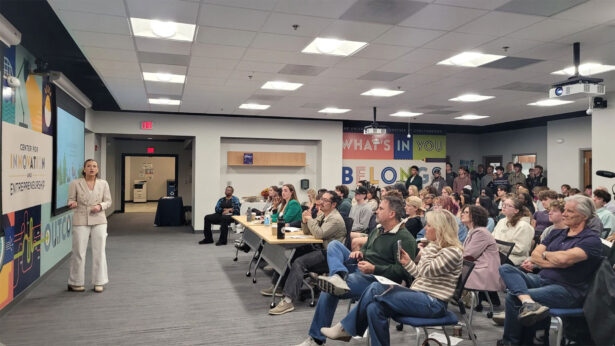By Jennifer Sicking | Photos by Patrick Murphy-Racey
On a day in 2015, Vasileios Maroulas, UT Knoxville mathematics professor and expert in data science, called then-Ph.D. student Andrew Marchese into his office and handed him a CD of data from the U.S. Army Combat Capabilities Development Command’s Army Research Laboratory (ARL), asking him to begin untangling acoustical data.
It was an action that would change research for Maroulas.
As Marchese began investigating the data, he realized the strategies laid out in the graduate textbooks, which could walk students through time-series analysis or signal processing methods, were not enough to break apart the data and to detect patterns.
What they needed was a new model to examine the data—one that would allow flexibility.
Marchese (Knoxville ’17) began investigating different possibilities and recalled another UT Knoxville professor who in class had mentioned topology—math that allows geometric objects to be stretched, reshaped and changed—as a theory, a curiosity in the math world. But he had said some mathematicians were using it to unpack large data sets.
Marchese went to Maroulas with the beginning of an idea.
“I love that they come up with ideas,” Maroulas says about his graduate students. “I want my research lab to be a safe space for my mentees to learn how to make mistakes. They will be the ones who will minimize the real estate of the unknown in the future, and they need to courageously risk so that they successfully navigate the research ocean later. We learn a lot from failures, and 99 percent of the ideas don’t work out, but that 1 percent is really awesome.”
This idea, to combine topology with data analysis as other mathematicians were beginning to do, proved to fall into the 1 percent category.
“We started looking at it, and I said, ‘There is a hidden raw gem here; we just have to dig it out,’” Maroulas says.
Incorporating topology with data analysis allows mathematicians to take large, complex data sets and find clusters and then find connections between these clusters. As the clusters connect to one another, patterns in the data emerge, allowing mathematicians to detect the one area they need, to eliminate the other “noise” in the data set.
Marchese, now a data scientist for the New York Times, remembers it as an interesting time as he learned and used this new math with Maroulas’ mentorship.
“A lot of mathematics is pushing incrementally up in some sub field,” Marchese says. “There was so much new stuff to uncover. It was kind of like the Wild West in this field. There was so much unexplored and so much low-hanging fruit to go and prove. There were concepts and ideas that no one had explored yet because it was so brand new, especially with interactions with real data.”
For Maroulas, that proved to be a career turning point into interpreting data using what he now promotes as statistical topological data analysis. He has published findings in prestigious journals and presented in international scientific conferences.
“This method is good for not only signal processing,” he says. “The approach is very transformative and has found applications in materials science, chemistry, biology and other areas as well.”

One other area is in artificial intelligence.
Since 2017, the Army Research Office (ARO), an element of ARL, has funded Maroulas’ work, and in September 2019, ARL named Maroulas a senior research fellow. Soon a new project followed—unpacking electroencephalogram (EEG) data from soldiers pursuing a task with a goal of using the data to improve artificial intelligence.
In milliseconds, a soldier may have to decide if the person in the distance is friendly or an adversary.
“Who is a good decision maker under a stressful environment—and you have to make that decision in milliseconds?” Maroulas asks.
In his lab, Maroulas and his research group—consisting of postdoctoral, graduate and undergraduate students—develop algorithms to help the Army discover just that.
Untangling the brain wave activity from soldiers has an ultimate goal of improving artificial intelligence for the Army.
“The mathematical capabilities Professor Maroulas and his team developed will find important use at ARL—the potential to apply this framework in a wide variety of applications from rapid analysis of electroencephalography and electromyography data to categorization of explosive events and study of human-machine teams,” says Joseph Myers, ARO program manager for this project.
It’s not just graduate students who are getting to learn about statistical topological data analysis. During 2019, the Army funded Maroulas’ research group with a summer learning experience for an undergraduate UT Knoxville student and a student from Bearden High School in Knoxville to learn about the process.
“I was able to mentor really young minds taking the first footsteps of their careers of what the Army Research Lab’s problems may be and how you can use mathematics and statistics to solve these problems,” he says.
From quarterbacks making a Super Bowl winning pass to a receiver and a racecar driver navigating turns in which millisecond decisions can lead to a wreck to making decisions affecting millions during a pandemic, Maroulas sees many possibilities for his work.
“We see lots of domains where having to make the right decision is critical and has a broad impact,” he says. “This method is transformative. It doesn’t have to be used for this type of data we’re looking at with the Army. It’s beyond that.”
In it may be the future.
“Mathematics tends to be a stringent discipline to tackle, but it has always been the greatest language to solve problems from measuring the height of pyramids in antiquity to decoding secret messages during World War II to detecting patterns in complex data during the 21st century,” Maroulas says. “If you’re willing to become an expert in walking the research bridge between mathematics and the real world, then you can really do a lot with this career.”



